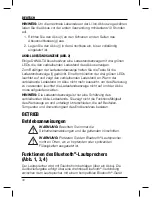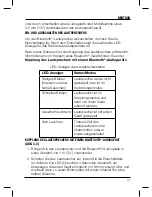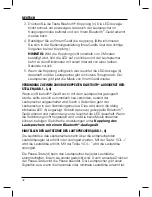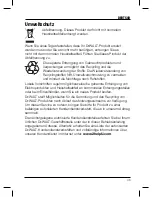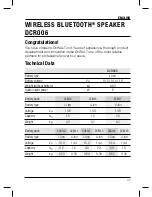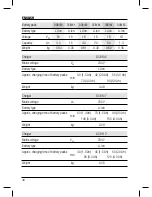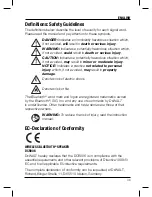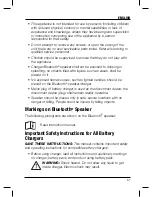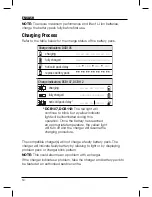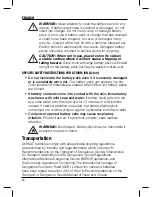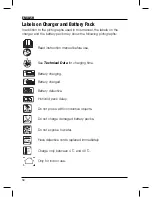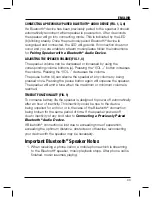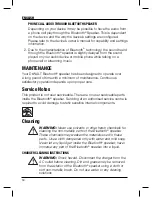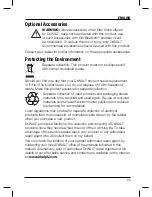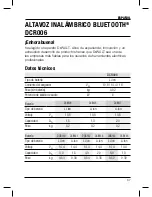
53
ENGLISH
•
Do not operate charger if it has received a sharp blow, been
dropped, or otherwise damaged in any way.
Take it to an
authorised service centre.
• Do not disassemble charger; take it to an authorised service
centre when service or repair is required.
Incorrect reassembly
may result in a risk of electric shock, electrocution or fire.
• In case of damaged power supply cord the supply cord must be
replaced immediately by the manufacturer, its service agent or similar
qualified person to prevent any hazard.
• Disconnect the charger from the outlet before attempting any
cleaning. This will reduce the risk of electric shock.
Removing the
battery pack will not reduce this risk.
• NEVER
attempt to connect 2 chargers together.
• The charger is designed to operate on standard 230V household
electrical power. Do not attempt to use it on any other voltage.
This does not apply to the vehicular charger.
SAVE THESE INSTRUCTIONS
Chargers
The DCB105, DCB107 and DCB112 charger accepts 10.8 V, 14.4 V and
18 V Li-Ion (DCB123, DCB125, DCB127, DCB140, DCB141, DCB142,
DCB143, DCB144, DCB145, DCB180, DCB181, DCB182, DCB183,
DCB184 and DCB185) battery packs.
D
E
WALT chargers require no adjustment and are designed to be as easy
as possible to operate.
Charging Procedure (fi g. 2)
1. Plug the charger into an appropriate outlet before inserting battery
pack. Also make sure that the voltage of your charger corresponds
to that of your mains.
2. Insert the battery pack (j) into the charger. The red (charging) light will
blink continuously indicating that the charging process has started.
3. The completion of charge will be indicated by the red light remaining
ON continuously. The pack is fully charged and may be used at this
time or left in the charger.
Summary of Contents for DCR006
Page 1: ...Page Size A6 105mm x 148mm DCR006 ...
Page 3: ...1 Figure 1 a b c d e f g h ...
Page 4: ...2 Figure 2 g j i ...
Page 5: ...3 Figure 3 Figure 4 OR OU O f OR c e e d b a ...
Page 135: ...133 ...


